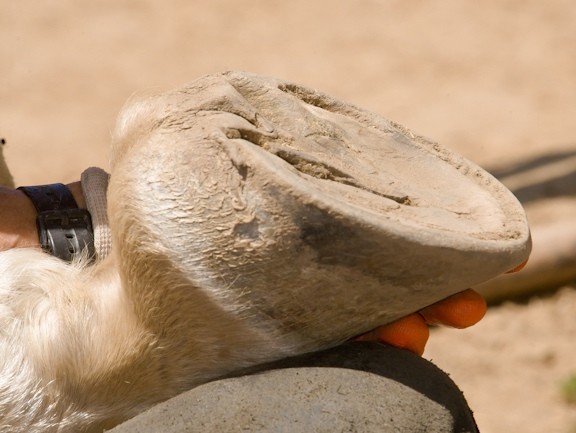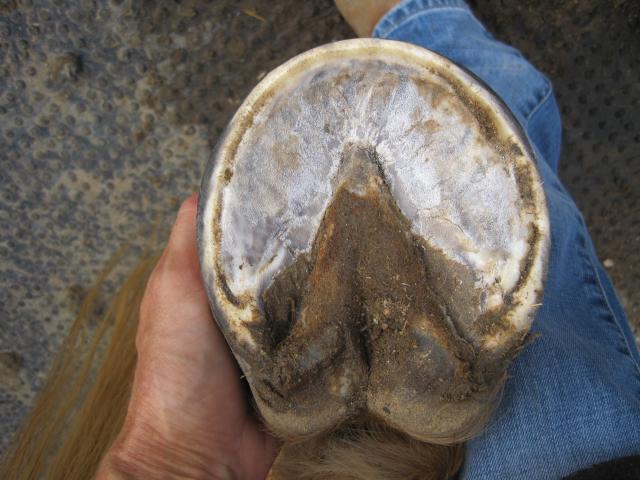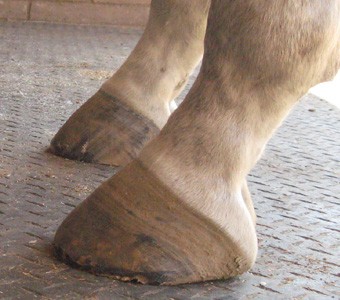Generally, trimming the toe properly is relatively simple. On a reasonably healthy foot, bring the wall about an 1/8″ above sole plane, and bevel back to the waterline. Your bevel will be stronger on a thick walled foot, less pronounced on a thin walled foot, but the end result should be the same. This strategy will serve you well on most horses, and when in doubt, this is the safest guidance and will take most hooves in the right direction.

An exceptional hoof, about 2 weeks post trim.
We’re all well-schooled never to take toe from the bottom, and never to invade the sole plane. Most of the time, that is exactly the right advice, and straying from this comfort zone can be scary. But there are instances when we do need to take toe from the bottom. Perhaps the best benchmark we have to recognize when this is necessary is collateral groove depth. If collateral groove depth at the frog apex exceeds collateral groove depth at the heel, it’s a pretty safe bet you need to re-assess your trim. Either you’ve taken the heels too short, or there is too much depth at the front of the foot.

This horse was dubbing his hind toes dramatically.
Assessing the collateral groove height showed considerably
more depth at the apex than at the heel.

Rasping the toe down from
the bottom of the foot about 1/4″ stopped the toe dragging,
and improved his movement considerably.

Lateral view of the same foot after trimming.
In some cases, this indicates a negative palmar angle, where the back of the coffin bone sits lower in the foot than the front. There may be a broken back hoof/pastern axis, or there may be a bull-nosed/dub toed dorsal wall. In this case, taking toe from the bottom is necessary, but should still be done with caution. Take the extra depth from the front of the foot cautiously and gradually. Most horses do best if you simply rasp flat across the excess sole, instead of paring out concavity.

Bull-nosed dorsal wall on a hind foot with a negative palmar angle.

With proper trimming, less than a year later…




